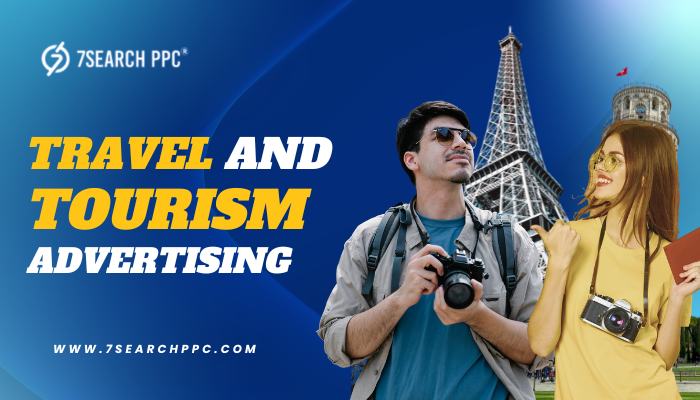
In a rapidly changing world, travel and tourism marketing has evolved to address the needs of travelers who value experiences, personalization, and convenience. With new tools, technologies, and strategies emerging, brands must stay ahead of trends to capture attention and convert interest into bookings. This guide explores the top travel and tourism marketing strategies to adopt in 2024 for success.
Leverage Social Media for Targeted Engagement
- Highlight Trending Destinations and Activities
Social media platforms are ideal for showcasing attractive destinations and travel experiences. Visual platforms like Instagram and TikTok enable brands to reach users with highly shareable content, often focused on unique travel adventures. - Incorporate Influencer Partnerships
Partnering with travel influencers can help bring authenticity and a trusted voice to your brand. Influencers attract diverse audiences, providing brands with immediate credibility and organic reach. - Encourage User-Generated Content (UGC)
Engaging travelers to share their experiences on social media fosters brand loyalty and builds community. UGC, such as travel photos, reviews, and personal stories, can amplify your brand reach and create a wealth of authentic content that resonates with potential customers.
Embrace Personalization Through Data-Driven Marketing
Segment Audiences for Tailored Campaigns
With today’s data capabilities, personalizing travel and tourism marketing based on factors like travel history, demographics, or preferences makes campaigns more relevant and engaging. Segmentation allows you to create targeted ads and email campaigns that connect with different traveler personas.
Utilize Predictive Analytics for Better Planning
Predictive analytics can help forecast travel trends and consumer behaviors, allowing marketers to tailor campaigns and promotions proactively. For example, if your data shows an increase in beach vacations in winter months, marketing efforts can be focused accordingly.
Offer Customized Travel Packages
Personalizing travel packages based on past behavior or stated preferences can improve conversion rates. By offering customizations like travel and tourism marketing, sustainable travel experiences, or tailored adventure packages, travel brands can meet unique traveler needs.
Incorporate Video Content for High Engagement
Use Short-form Video for Instant Impact
Platforms like TikTok, Instagram Reels, and YouTube Shorts are excellent for short, engaging videos. Brief travel guides, destination highlights, or quick travel and tourism marketing makes it easy for viewers to consume and remember the content, enhancing brand recall.
Create Virtual Tours for Immersive Experiences
Virtual tours let potential travelers “visit” destinations digitally before they make a commitment. Using 360-degree videos or VR, brands can create immersive previews of popular destinations or resort properties, which can be a strong persuader for undecided travelers.
Share Traveler Stories and Testimonials
Real-life testimonials and stories resonate deeply with audiences. Featuring traveler journeys, adventures, and personal experiences adds an authentic layer to your content and builds trust.
Optimize for Mobile and Digital Booking Experiences
Mobile-First Design
As mobile usage dominates travel and tourism marketing and bookings, optimizing websites and apps for mobile is essential. A mobile-friendly interface with quick loading times, simple navigation, and intuitive booking features helps improve user experience and reduces bounce rates.
Streamline Digital Booking Processes
Travelers expect seamless and fast booking experiences. Streamlining your booking process by minimizing clicks, simplifying forms, and offering secure payment options can reduce abandonment rates and increase conversions.
Implement Chatbots and AI for Customer Support
AI-powered chatbots provide travel and tourism marketing, helping customers with questions, booking issues, or recommendations 24/7. This added support can improve customer satisfaction, especially for travelers seeking information outside business hours.
Invest in SEO and Content Marketing
Create SEO-Optimized Destination Guides
High-quality content that answers travel and tourism marketing questions is crucial for driving organic traffic. Develop SEO-rich destination guides, packing lists, itineraries, and travel tips to rank well on search engines and attract users looking for information.
Publish Blogs and Articles on Travel Trends
Informative blog posts on upcoming PPC for the travel ads, budget travel tips, or off-the-beaten-path recommendations can establish your brand as an authority. Quality content builds trust and keeps your audience engaged, increasing the likelihood of bookings.
Focus on Voice Search Optimization
Many travelers now use voice search to travel and tourism marketing. Adapting content to include conversational keywords and question-based phrases can improve visibility in voice search results, reaching more potential customers.
Explore Sustainable Travel Marketing
Promote Eco-Friendly Options
As more travelers seek sustainable travel experiences, brands can highlight eco-friendly options like low-carbon transport, green travel and tourism marketing, and eco-tours. Sustainable practices can differentiate a brand and appeal to environmentally conscious travelers.
Certify with Green Labels and Partners
Displaying certification from recognized eco-friendly organizations builds credibility. Consider partnering with organizations like the Global Sustainable Tourism Council to validate your efforts and communicate commitment to sustainability.
Educate Travelers on Responsible Tourism
Encourage travelers to participate in responsible tourism by respecting local cultures, conserving resources, and supporting local communities. Providing this guidance can enhance customer loyalty and align your brand with sustainable travel values.
Utilize Email Marketing for Loyalty and Retention
Send Personalized Offers Based on Past Trips
Using customer data, you can create personalized email campaigns with offers based on past destinations or booking patterns. A targeted re-engagement travel and tourism marketing with exclusive discounts or tailored travel suggestions can bring back past customers.
Offer Loyalty Programs for Frequent Travelers
Loyalty programs with reward points, special discounts, or early booking access incentivize repeat bookings. Offering exclusive perks to loyal customers not only improves retention but also increases word-of-mouth referrals.
Create Seasonal and Event-Based Campaigns
Design campaigns around holidays, peak travel seasons, or destination-specific events to increase interest. For example, a “Fall Escape” campaign can showcase destinations that are ideal for autumn travel, creating timely relevance.
Adopt Augmented Reality (AR) to Enhance Experiences
Implement AR for Destination Previews
AR can allow potential travelers to visualize travel and tourism marketing by overlaying images or videos onto real-world environments. Apps that show landmarks, hotel interiors, or local attractions via AR offer engaging previews and spark interest.
Provide AR Guides for On-Site Information
In-destination AR guides that overlay information about travel and tourism marketing or nearby attractions can enhance travelers’ experiences and encourage them to explore more. These guides add a layer of interactivity and convenience to any travel experience.
Capitalize on Paid Advertising and Retargeting
Use PPC for Highly Targeted Reach
Pay-per-click (PPC) ads allow travel brands to reach specific demographics actively searching for travel-related keywords. By targeting these high-intent users, you can increase traffic and maximize ROI.
Utilize Retargeting to Recapture Interest
Retargeting campaigns remind visitors who didn’t convert initially, keeping your brand top-of-mind. By showcasing enticing offers or highlighting what they viewed, retargeting can convert window-shoppers into booked travelers.
Experiment with Geo-Targeted Ads
Geo-targeted ads reach users within specific regions or close to popular travel hubs. For instance, ads for a tropical getaway can be shown to users in colder regions during winter, tapping into seasonal appeal.
Emphasize User Reviews and Testimonials
Highlight Positive Reviews on Key Platforms
Reviews on platforms like TripAdvisor, Google, and Yelp heavily travel and tourism marketing travel decisions. By encouraging satisfied customers to leave reviews, brands can build a reputable online presence and strengthen trust with new customers.
Incorporate Reviews into Marketing Material
Adding testimonials to social media posts, landing pages, and email campaigns provides social proof. Showcasing satisfied customer experiences creates credibility and gives hesitant travelers the confidence to book.
Address Feedback to Improve Brand Image
Responding to both positive and negative reviews shows a commitment to customer service. Addressing feedback thoughtfully not only improves customer relations but also allows you to fine-tune services based on traveler input.
Conclusion
As travel demand resurges in 2024, travel and tourism marketing needs to evolve with consumer expectations and industry trends. By embracing personalization, immersive experiences, sustainable practices, and digital innovations, travel and tourism marketing can capture attention, foster loyalty, and drive bookings. These strategies serve as a roadmap to success, helping travel marketers craft campaigns that resonate, inspire, and deliver results.
Frequently Asked Questions(FAQs)
How can travel brands effectively use social media for marketing?
Ans. Travel brands can use social media by posting visually appealing content, partnering with influencers, and encouraging user-generated content. Engaging content helps capture attention and build a community around the brand.
What is the importance of personalized marketing in the travel industry?
Ans. Personalized marketing creates tailored experiences, improving engagement and conversion rates. By using data insights, travel brands can offer relevant recommendations, packages, and promotions to travelers.
Why is sustainability crucial in travel marketing?
Ans. Many travelers now prioritize eco-friendly travel options. Highlighting sustainable practices and responsible tourism appeals to these consumers, allowing brands to differentiate themselves and meet ethical travel demands.
How does video content improve travel marketing?
Ans. Video content allows travelers to see destinations in action, creating a strong emotional connection. Virtual tours, testimonials, and short travel guides improve engagement and provide a more immersive experience.
What role does SEO play in travel and tourism marketing?
Ans. SEO helps travel websites rank higher on search engines, driving organic traffic. Creating optimized content, like travel guides and destination tips, can attract travelers actively researching trips and improve brand visibility.



